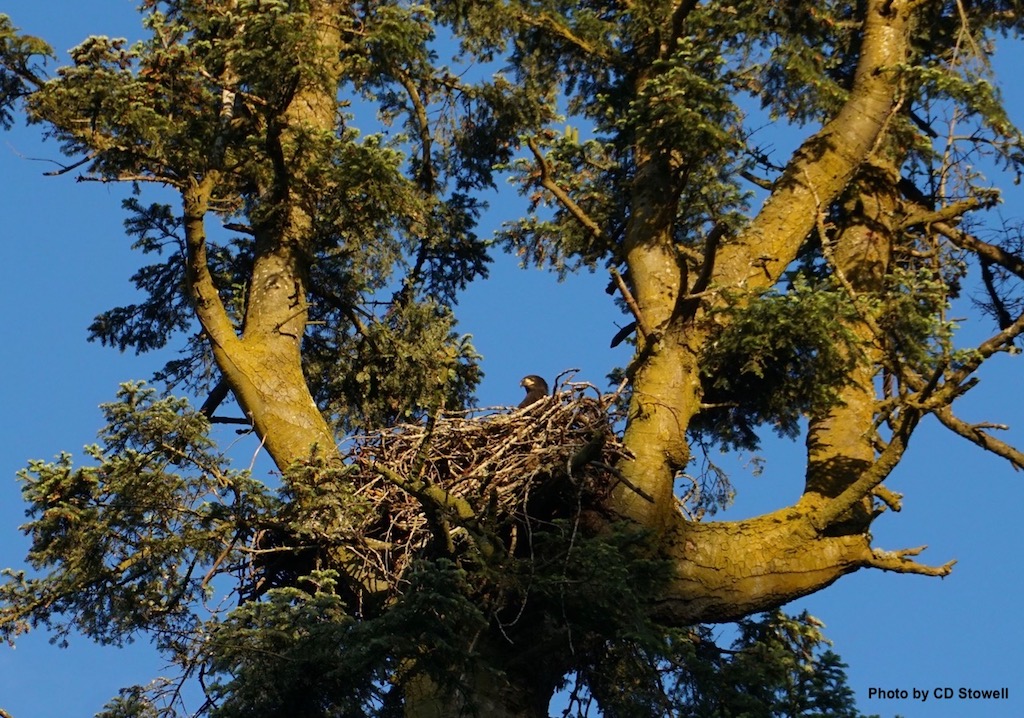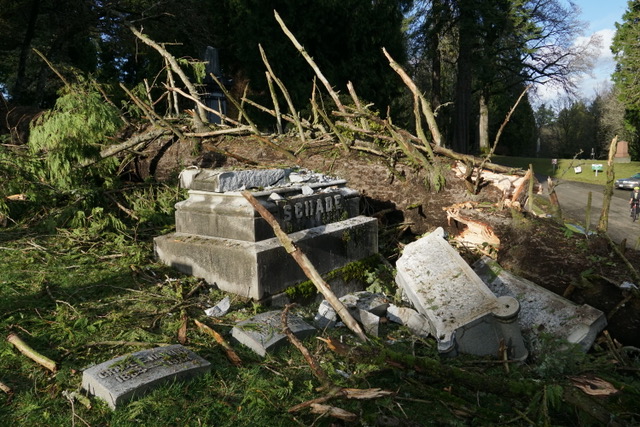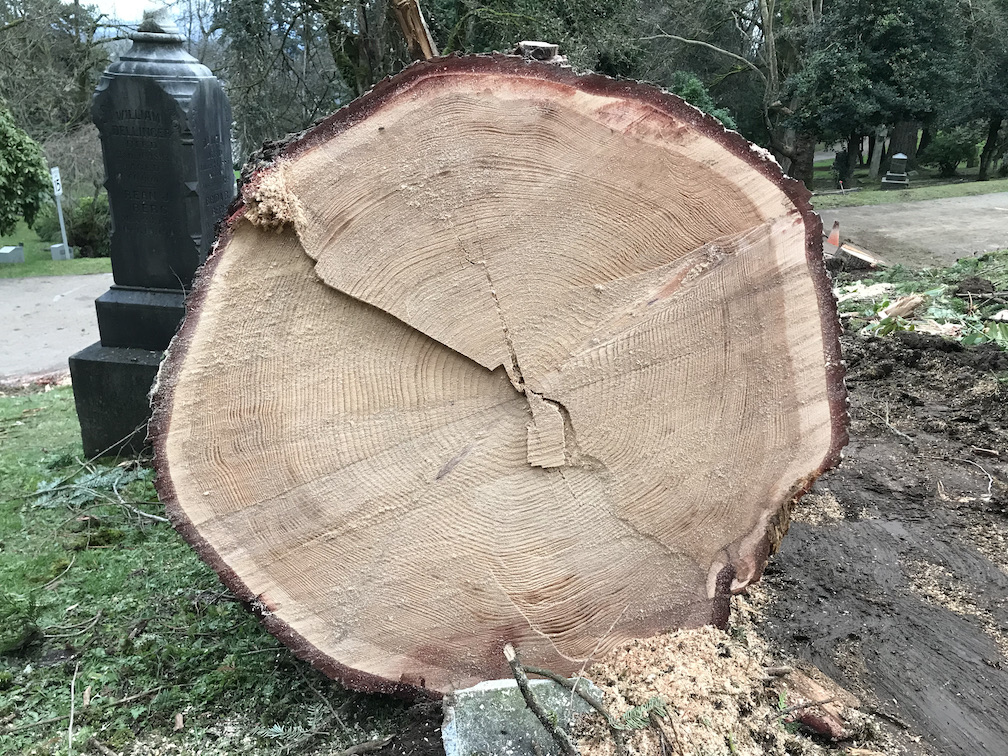Douglas-Fir with Eagle Nest Blown Down!

The windstorm of January 12, 2021 blew down a tall Douglas-fir tree in River View Cemetery that had been home to a pair of bald eagles for 20 years. The tree had been split (by lightning?) years ago so that it had a candelabra top — a perfect place for an eagle nest. The nest was at least five feet in diameter, made of loose sticks held together by gravity, so it shattered when it hit the ground.

Many people from within and outside our neighborhood knew of this nest, and followed the emergence of juveniles every spring.
The adult pair observed in this and adjacent Doug-firs are likely the original builders of the nest. It’s commonly believed that bald eagles mate for life, but it’s more accurate to say that they’re bonded to the nest they share.
The pair had just returned to the area during the past month for mating, so there weren’t any eggs in the nest when it fell. Eggs are usually laid in February and hatch in March after a 34-36-day incubation. There are usually two eggs, though in 2020 there was only one eaglet. The adults take turns sitting on the eggs and finding food, and once the eggs have hatched it becomes a full-time job for the parents to bring back small mammals, other birds, or fish from the river to feed the growing eaglets. If humans have missed the courtship rituals, they’re sure to see all this feeding activity.
Eaglets grow fast and are nearly adult size by six weeks.
At 10-12 weeks they begin to fly short distances, with lots of calling back and forth between adults and juveniles in the three trees they use for flying lessons
.
This is the period when neighbors have the most fun watching and listening to the eagle family.
At about 4-5 months the fledgings leave the nest permanently and live a nomadic life.
At about 5 years, their head and tail feathers turn white — they are ready to pair up, start their own nest, and mate.
Bald eagle pairs stay together as long as they’re successful in reproducing, and they can live up to 30 years. It’s impossible to predict how the River View pair will spend what must be their golden years. They may decide to build a new nest nearby, though they need to hurry for this season; or they may have to go elsewhere in their one-to-two-square-mile territory to find a suitable tree. It could be that the loss of the nest will cause them to split up and find new mates, possibly in established nests. Their Collins View fan club will be watching and hoping they stay local — together!
Of course the loss of the giant Doug-fir is a sad passage in itself. We are not sure exactly how old the tree was — can you count the rings? Hint: We believe it was almost as old as the cemetery, founded in 1882.

Photos by Cynthia Stowell. Text by Collins View neighbors who grant permission to use or adapt with attribution. (Attribution means to give us credit! Thanks.)